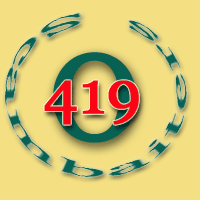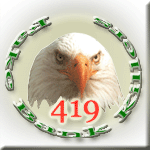
• Home •
Victim´s Story •
Fraud Prevention •
Project GSO •
Hall of Shame •
LINKS •

Check Fraud - Why It's Growing
Laser Check Printers and Counterfeit Checks
There is no single reason for the continuing increase in check fraud activity there are many reasons that contribute to the rise of check fraud in the 1990's. According to the Office of the Comptroller of the Currency between 1991 and 1993 the number of fraudulent checks increased 136%. Check fraud has increased steadily throughout the 1990's and shows little signs of abating. There are many factors leading to increased check-fraud losses including:
-Technological Advances
-Decreasing Cost of Technology
-Difficulty in Detection
-Availability Regulations
-Competitiveness of Banks
-Computers vs. Guns
-White-collar Crimes
-Gangs finance other criminal activities
-Check Fraud is a Local Crime
Revised UCC Regulations
Technological Advances
Prior to the 1990's check fraud was committed primarily by "insiders", either employees of a company or bank, who had access to preprinted check stock and/or account information. It was hard for "outsiders" to commit check fraud mostly because of the high cost of printing equipment needed to produce counterfeit checks. In the 1990's technological advances in laser printers, computers, scanners and desktop publishing software has allowed a new class of criminals to commit check fraud.
Decreasing Cost of Technology
Along with the technological advances, decreasing costs and wide spread availability of these products have made even sophisticated tools affordable to obtain. Now almost anyone with a basic knowledge of computers and software can attempt check fraud. Criminals have easy access to all of the tools necessary to commit check fraud and with the aid of these tools no specialized knowledge or skills are needed.
Difficulty in Detection
Given that over an estimated 65 billion checks are processed in the U.S. each year it isn't feasible that banks can visually inspect each check for authenticity. The high-speed processing equipment used to process those checks isn't capable of detecting the increasingly sophisticated counterfeit checks. At times even visual inspection can't determine if a check is counterfeit. Using a positive pay service would identify counterfeit checks upon presentment. However, without positive pay any counterfeit checks may not be detected until a company receives and reviews their bank statement, which is too late to avoid losses.
Availability Regulations
In 1987 Congress passed the Expedited Funds Availability Act (EFAA), which established the maximum hold periods that banks can place on funds deposited by checks. The Federal Reserve implemented the EFAA's provisions in Regulation CC. Generally, local checks (checks payable by banks located in the same check-processing region as the depositary bank) must be made available for withdrawal within two business days of deposit. For non-local checks it is five business days. Most check fraud is with local checks given that banks have less time to verify the authenticity of checks. By the time a paying bank notifies the depositary bank of a fraudulent check the criminals have withdrawn the funds.
Competitiveness of Banks
The increasingly competitive banking and financial services industries has led to some institutions providing availability of funds even quicker than required Reg. CC.
Computers vs. Guns
For criminals check fraud is much less risky than armed bank robbery, but the intent is the same, to steal money from banks. Rather than enter the highly secure physical bank branches with a gun or weapon, criminals are increasingly opting to stay at home and create fraudulent checks with computers and laser printers and then enter the bank as a customer, depositing and withdrawing their fraudulent checks.
White-collar Crimes
In the 1990's violent and drug related crimes have been a priority for law enforcement agencies. Non-violent "white-collar" crimes such as check fraud garner much less attention and focus from the law enforcement community. As a result investigations, prosecutions and prison terms for check fraud tend to be less than for other crimes, especially crimes labeled "violent crimes".
Gangs finance other criminal activities
Criminals, even violent ones, are aware of the priorities of law enforcement agencies. Increasingly, organized gangs are using check fraud as a low risk, and profitable, means to finance their expansion into other more violent crimes. In 1996 the FBI estimated that organized criminal groups drove approximately 50% of the stolen and counterfeit check activity.
Check Fraud is a Local Crime
Although the problem of check fraud is national in scale, investigations are usually conducted by local law enforcement agencies. Generally the FBI and national law enforcement will only get involved if the fraud exceeds $100,000 or it is determined that interstate activity has occurred. However, it may be difficult to determine if multiple check fraud losses are related to the same scheme or perpetrator. Also, local law enforcement may have threshold limits of their own that must be exceeded before actively investigating or they may not regard check fraud as a serious problem.
Revised U.C.C. Regulations
It is debatable whether the revisions to the U.C.C. Code regarding check fraud liability has contributed to the growth in check fraud in the 1990's. Before adoption of articles 3 and 4, which governs negotiable instruments and check collection respectively, of the U.C.C. in the early 1990's banks usually absorb the losses from check fraud, wanting to maintain good relations with their customers. However, the changes in the U.C.C. introduced "negligence" and "ordinary care" as determinants of liability for check fraud losses. With approximately ten thousand banks and ten million companies in the U.S. any shift, whether perceived or not, from banks to companies diffuses the responsibility and vigilance for fighting check fraud.
Laser Check Printers and Counterfeit Checks
More Criminals Finding it Easier to Commit Fraud.
All it takes is a personal computer and a good laser printer and some guy named Vince who lives in any town America can clean out a large companies bank accounts. Due to better technology, the quality of counterfeit documents has improved in leaps and bounds. With the aid of a computer, a high-resolution digital scanner and a laser printer just about anyone can fake company checks and according to the Federal Bureau of Investigation, this is becoming a huge problem.
Technology and desktop publishing along with laser printers have paved the way for fake check creation. According to the experts laser check printers are so advanced that it is near impossible to tell the real thing from a fake. Any one can purchase a laser check printer; all you have to do is have the cash. You don’t even have to prove that you are a valid business.
Counterfeit check production use to be the work of criminals who were intelligent and they needed expensive engraving and printing equipment. These days however, it is much easier to do and those who are embarking upon a life of counterfeiting checks with laser printers need only to know how to work the computer and the laser printer. What’s more is that it is cheaper to do with the constantly falling prices of good laser printers.
A decent laser printer that reproduces 300 dots per inch less than $500. A laser printer that does 600 dpi costs less than $1,000 and to most criminals this is a small investment as compared to the money they will make counterfeiting checks.
According to the FBI it is increasingly easy to fake corporate checks. The person looking to counterfeit checks starts by collecting a company's check. They do this by either stealing one or getting one from an employee. The check is then scanned for the corporate information and signatures. The check can then be altered using the simplest desktop software. Once this is done a laser printer is used to print the check thus adding to the authentic look of the fake check. Most office supply stores carry safety check paper which adds to the rouse. Once all of this is completed most criminals go one step further and attempt to cash the checks at smaller stores, skirting detection that may undoubtedly take place at a larger corporate store or bank.
Some laser check printer manufacturers are taking steps to combat this use of laser printers. According to Xerox, they use technology in their laser printers to put the "serial number of each machine coded in little yellow dots" allowing for the tracking of documents printed on them.
No matter what strides laser check printer manufacturers make it would appear that there are those out there who would misuse it; however law enforcement is making the same strides in catching those who do.
© by GSO • Contact